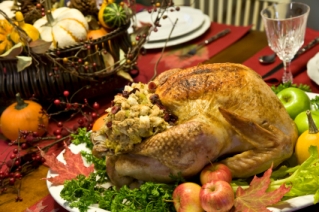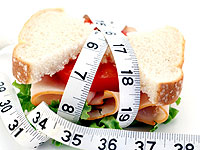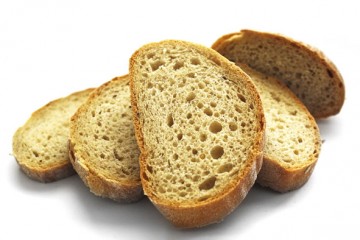Thanksgiving Dinner
Thanksgiving Dinner

Here it comes, the biggest chow-down of the year: Thanksgiving Dinner. From the days the pilgrims laid out their corn puddings and acorn-stuffed squab, to our modern turkey-centered feasts, this holiday has always been about the food. Our ancestors were grateful to have any at all. Nowadays, most of us have too much food, and that's not just on the holidays.
Yet we look forward to this holiday especially, knowing that it brings with it a license to gorge ourselves on treats we don't get most of the year. We know in advance that we will go overboard, and even the most earnest dieters plan for it, affording themselves a "free day" for the annual food fest. It is the rare diner indeed who doesn't fill up at least a little extra on Thanksgiving dinner.
On Thanksgiving, most people try to ignore their body's signals of fullness more than usual because they want to keep eating for the sheer pleasure of the treats. So here's a little satiety awareness experiment that you may want to try.
If you already know you're probably going to keep eating, go ahead and pay attention to the signals anyway. Eat slowly, really savor those special dishes, and notice when you start to feel your hunger relieved. Then notice when you begin to feel satisfied. See how much it takes before you feel full. And how much more until you feel stuffed. And then just notice how much you keep eating and how your body responds, and whether you still eat when you're actually physically uncomfortable from fullness. Many people report that if they're enjoying a meal, that's just what they do.
Our satiety signals are always there but the fact is that many Americans ignore them most of the time. Some very common cultural factors teach us to ignore our bodies' signals from the time we are very small. A breast-fed baby may turn away from the nipple when he's satisfied, and the mother will typically stop feeding. But if a bottle-fed baby turns away satisfied when there's still some formula left in the bottle, it's more than likely that the nipple will be popped right back into his mouth, essentially overriding the satiety signals that are telling him, "that's enough, you can stop now."
We eat more packaged foods than ever before, and we feel compelled to finish the package, even if it says right on it that it contains two servings. And if we eat out, it's the same thing. Oversized portions are one of the main reasons for the American obesity crisis. We're presented with more food than we should eat, but in a serving and a setting that seems to suggest, even demand, that we eat it all.
We're pretty well prepared to ignore our satiety signals during our annual Thanksgiving gorging. Still, doesn't it ever feel like too much work trying to get all that food down? It should. Even aside from the sheer quantity you may eat, a typical Thanksgiving meal can rate very high on measures that gauge foods ability to satisfy our hunger. These are things like fiber content and glycemic load (the affect a food has on your blood sugar, which can be immediate and uncomfortable, or more gradual and tolerable). The standard Turkey Day fare includes some pretty high-calorie dishes, too.
-
Daily Diet Contributes To Our Health
Daily diet contributes to our health and
-
Scientific Study Finds Eating Coconut Oil Daily Leads to Reduction in Waist Size
Scientists now realize that weight reduction connected with coconu
-
Best Diet to Lose Weight Fast
If you are someone who has always had a weight problem, I am sure you
-
7 Reasons to Try a Healthy-Carb Diet
V
-
10 Successful Secrets For Weight Loss
Attitude: In order to succeed with your weight loss goals it is impor
-
Fast Weight Loss Diet Rancho Cucamonga: Is It Possible
Losing weight is generally consider dot be one big pain but then if y
- DON'T MISS
- Healthy Eating
- Why Walking Is Better Than Running
- Zone Diet: What To Know
- 3 Ways to Indulge Without Gaining a Pound
- Diet Tricks the Stars Use to Stay Thin
- Eco-Atkins Diet (vegan)
- Apple Cider Vinegar: Burns Fat And Reduces Cholesterol
- This Is Why You Need To Drink Hot Water On An Empty Stomach Every Morning! The Results Will Surprise You!
- Increase Success by Starting Your New Year’s Resolution Early
- 9 Better-for-You Potato Chip Swaps




